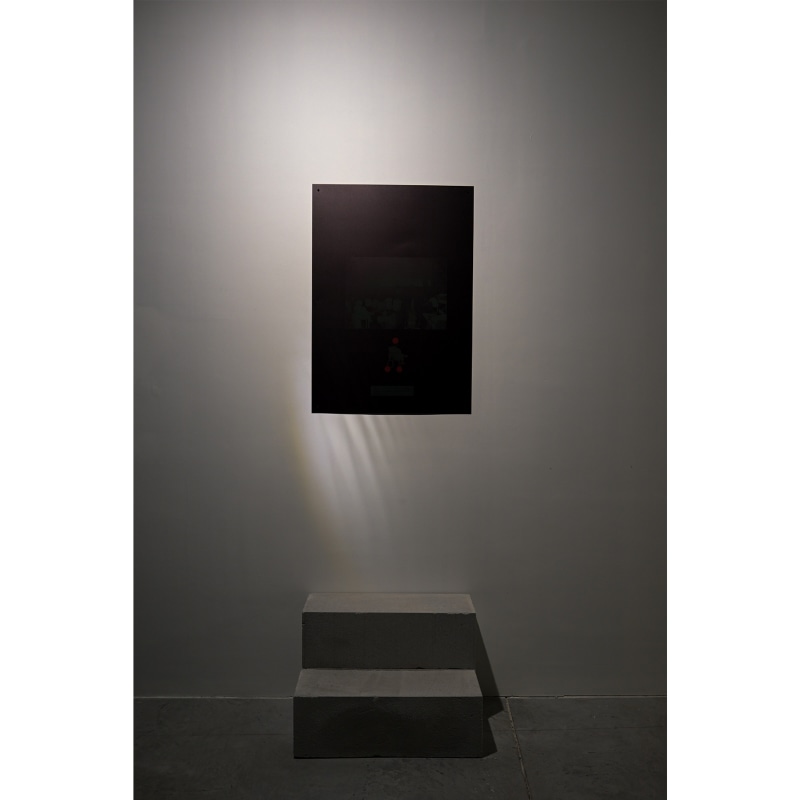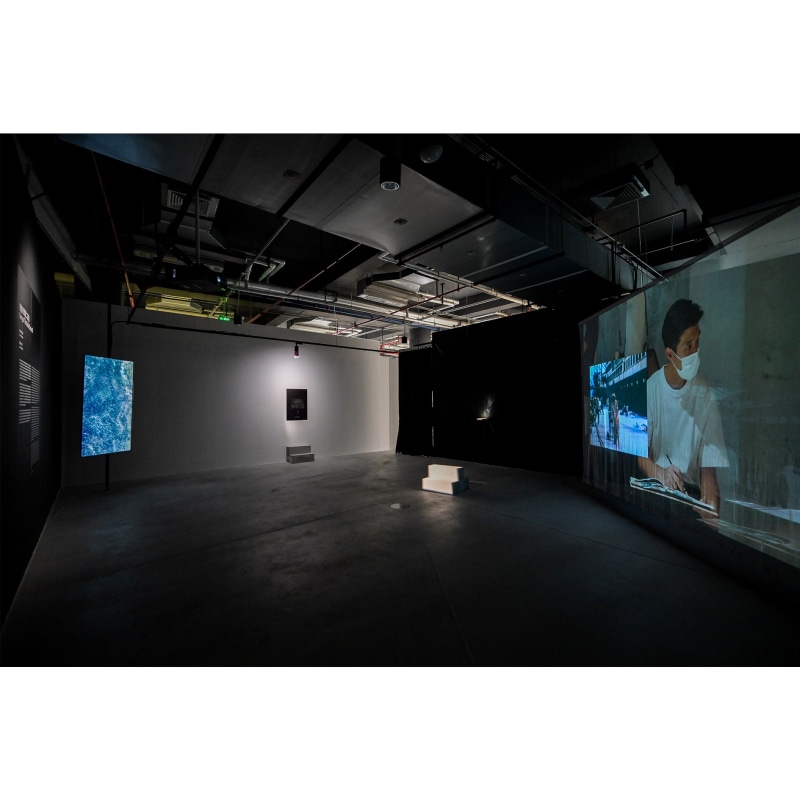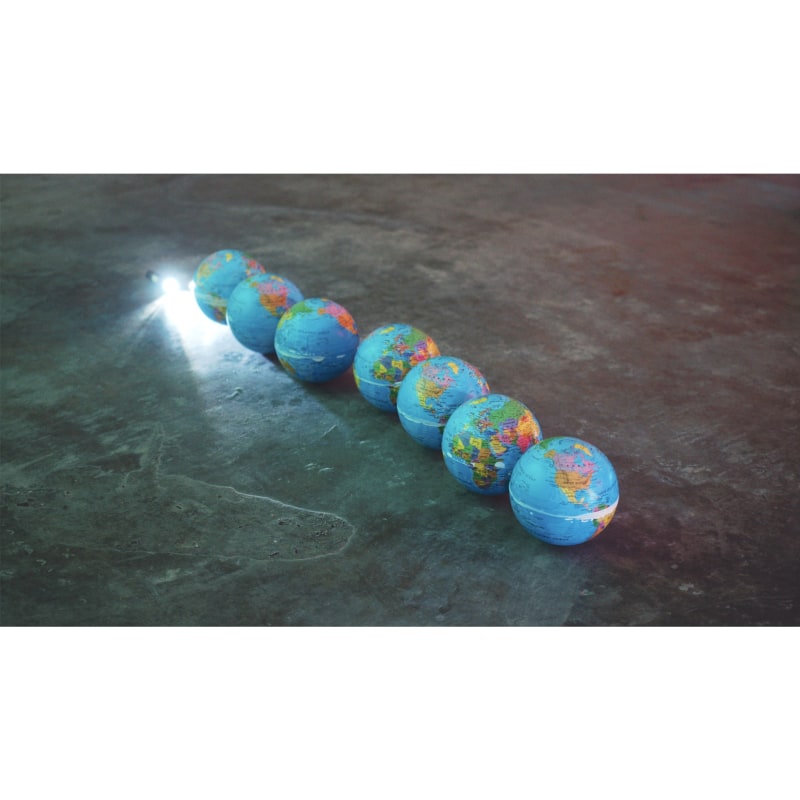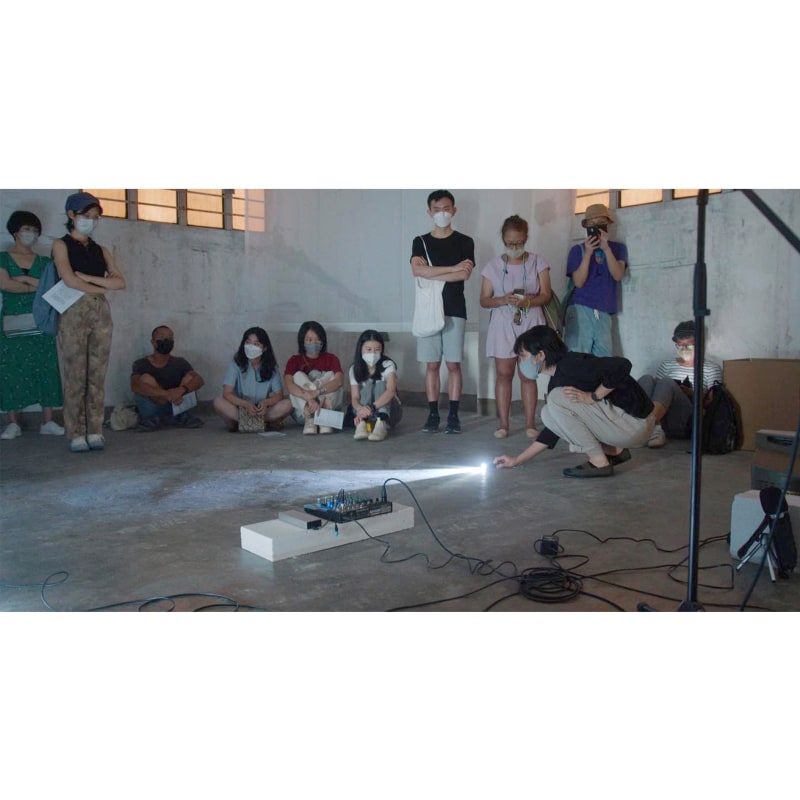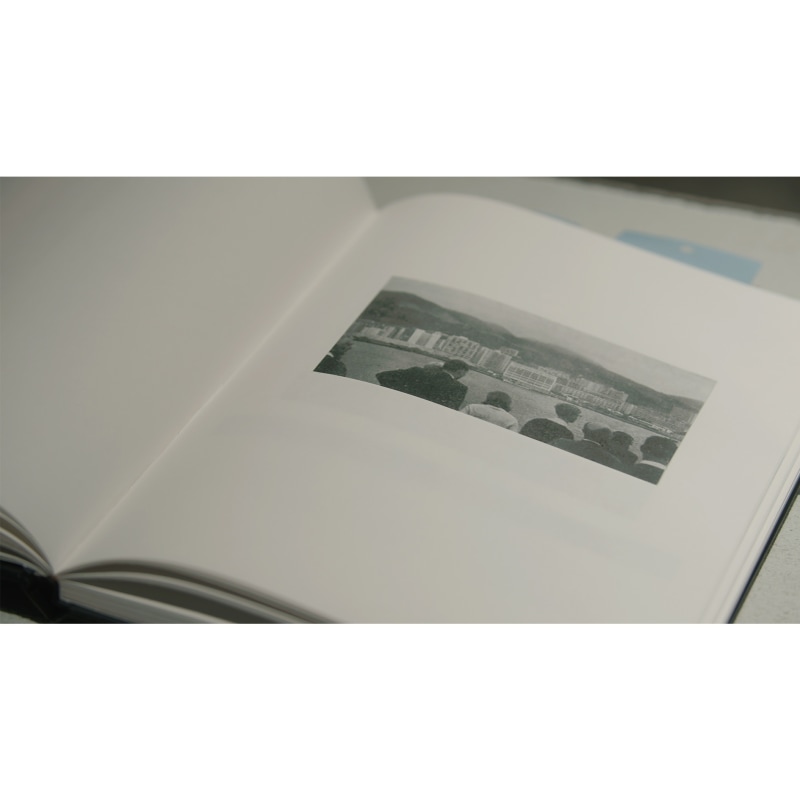Yuk Mui Law
Song of The Exile, Scene II
Law Yuk Mui’s works often anchored on the notion of water as the point of departure to explore the geopolitics and history of Hong Kong, as well as the Asian population of sea nomads during the Cold War period. To Law, images are not merely a medium of expression, but also a way to inquire and explore. Song of the Exile (2022, Hong Kong) is a pivotal experimental project, where Law reimagines and transforms the exhibition venue into a hybrid site of cinema space and film studio, based on her ongoing historical research on Dishui Nanyin(a form of traditional singing performances in Guangdong performed by blind singers) and Chinese diaspora across Southeast Asia. Through live performance, she presents an improvised mise-en-scène with images, sculptures, found objects and archival materials, a unique experience characterized by the artist as "one-take mise-en-scène". Visitors are free to move around the space and liberate themselves from the presumed spectacles framed by fixed perspectives or linear narratives. Law coined the term "improvised cinema" to describe such experience where fragmented traces of geography, history, memories and imaginations intertwined and connected to form an expanded, multi-dimensional site of narration, with bodily intervention as a physical response to embodied memories.
In Song of the Exile: Scene II, Law extends her experiment and furthers the emphasis of absence. She recontextualizes the video recording of Hong Kong's "improvised cinema" as a new medium and projects them on the scrim floating ghostly at the center of the exhibition space, together with the soundscapes generated by AI based on archival images and the photo documentation of Song of the Exile (2022). The video converges with the fragments and moments from the original project, and re-presented in Xiamen with the following elements: the "rust chipping" sound performance that mimicked the sound of chipping from cargo ships as sailors were preparing for repainting; the ban (tempo) of Dishui Nanyin in Song of the Exile; an erhu rendition of Ma Sicong's Homeland Nostalgia, a song once used as propaganda for overseas Chinese in Southeast Asia; and a reconstructed sea route from the port of Tanjung Priok, Indonesia, to Tsim Sha Tsui, Hong Kong. Texts, images and objects are scattered across the space, forming layers of intersections across space and time. Vacant bricks, absent evidence and missing figures pose critical questions about how history can be reiterated and recontextualized in the present.
The performer who demonstrated rust chipping in the video is both a sailor and an artist; Law has relocated to Japan in recent years. Individuals with different identities and memories remain vagrant in the context of globalization, and struggle in the search of belonging and anchor. Law responds to the past with emotions and bodily experience, and reconstructs history by analyzing the underlying logic. Such approach resonates with Walter Benjamin's concept of Trauerspiel (Tragedy) in the re-enactment of history and re-appropriation of fragmented past. Through mourning, commemorating and reconfiguring, Law combines the ghostly presence of history with the contemporary moment, and creates a dynamic space where emotions profoundly shape our understanding of the present and our reimagination of the future.
English Translation by Christine Lee
